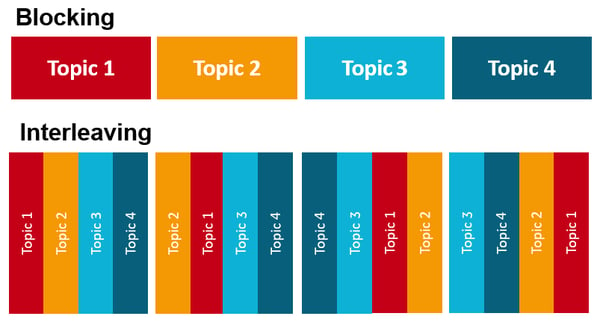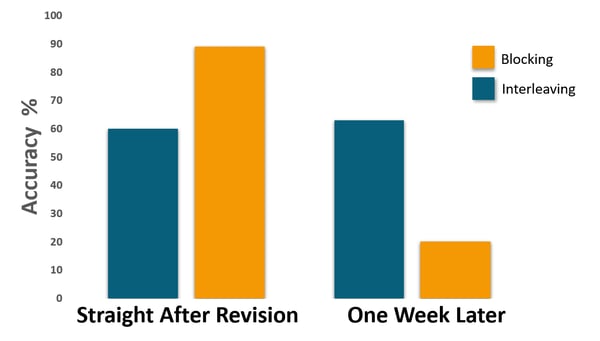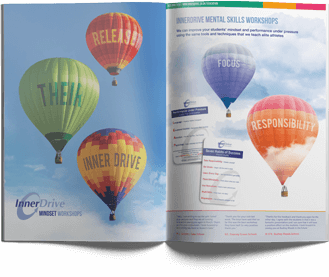The growing body of research surrounding interleaving has meant that an increasing number of teachers are looking to weave it into their classroom. However, with the expansion of scientific research often comes a number of misconceptions.
Fortunately, we can look to the research to help separate the facts from the fiction. We have summarised the four most common misconceptions on interleaving in this blog to ensure that it is used as effectively as possible to help students learn.
What is Interleaving?
Interleaving consists in mixing up the topics a student learns or revises, rather than spending hours on a single topic before moving on to the next (which is known as “blocking”).
Let’s take Maths revision as an example: rather than blocking their studying by revision all of algebra, then all of geometry, followed by all of fractions, students can use interleaving by mixing these up in an unpredictable, random order. This way, they could study some algebra, then some fraction, some geometry, then fractions again, followed by algebra…
Confused? Here’s a graph to show you what the same amount of revision time looks like when blocking and when interleaving:

4 Myths Surrounding Interleaving
Interleaving is beneficial to students for many reasons, meaning its popularity in education is justified. But like with any new and exciting concept, it can be misunderstood. Here are the four most common myths surrounding interleaving – and what to believe instead:
- Interleaving is the same as Spacing
People often think that interleaving and spacing are the same study technique. However, this is not the case. Spacing concerns time and is the idea that revisiting the same material often is more effective than studying it all at once and never or rarely touching it again.
Interleaving on the other hand is about mixing up your topics within shorter periods of time. This of course means there is an element of spacing to interleaving, but that not all spacing is interleaving.
- We Should Interleave Subjects
A common misconception on interleaving is that it involves mixing up your subjects as well as topics. If that were the case, this would result in students doing some Maths revision, followed by French, followed by English within one session.
Although this is probably not a bad idea, this is not what interleaving means. Interleaving is mixing up topics – not subjects. This allows them to make connections within each subject and also choose the most effective strategy for that problem. This therefore gives them a better understanding of the material, helps form stronger connections and maximises the likelihood that the information will be remembered.
- Interleaving is a Quick Win
Students can easily become disheartened when using interleaving, as the benefits are not immediate but instead more long-term. Recent research, in which students had to learn to solve a number of different problems, highlighted the effectiveness of interleaving as a long-term strategy. Students either learnt how to solve problem in a blocked format (i.e. they solved problems based on one topic followed by another) or interleaved (i.e. the problems were randomly mixed in terms of topic).
The researchers found (see graph below) that when the students were tested on their abilities to solve problems immediately after they had revised, performance was much better in the blocking condition. However, when students were tested on their abilities one week later, performance in the interleaved condition was vastly superior.

These results clearly show that revision using interleaving is a much better strategy for long-term retention. This is particularly important with the growing use of linear exams: students now need to be able to recall vast amounts of information at the same time.
- The More Interleaving You Carry Out, the Better the Outcomes
Given the clearly positive results described above, there is sometimes a perception that the more you use interleaving, the better students’ results will be. However, if we interleave too many topics, students would fail to grasp the basics of any of them and struggle to go into more advanced topics.
There doesn’t appear to be a consensus on the optimum number of topics to interleave, though a recent study did find that interleaving the practice of three different types of badminton serves led to more effective outcomes than practicing the first serve followed by the second, followed by the third.
Final Thoughts
Interleaving is a highly effective revision technique that can help students learn more effectively and efficiently and is particularly interesting to ingrain topics in students’ long-term memory. It helps by prompting them to make connections between topics.
However, for interleaving to be really effective, it needs to be used correctly. Dispelling common myths around the topic and taking a common-sense approach offers a good starting point for this. So, keep in mind:
- Interleaving and spacing are not variations of the same thing;
- Interleaving is for topics within one subject – not subjects themselves;
- The positive results of interleaving don’t show immediately, which might frustrate students at first;
- More interleaving does not mean more results and could even harm students’ learning.






